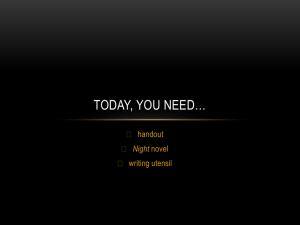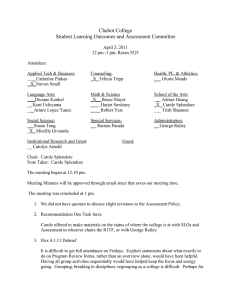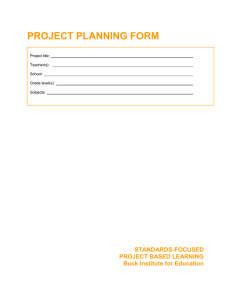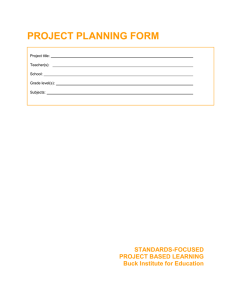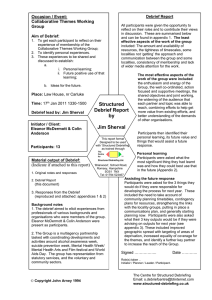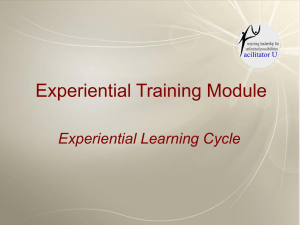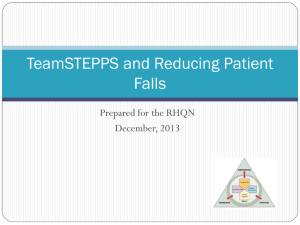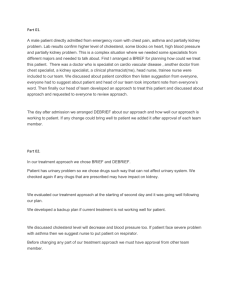Sample Employee Orientation Debrief
advertisement
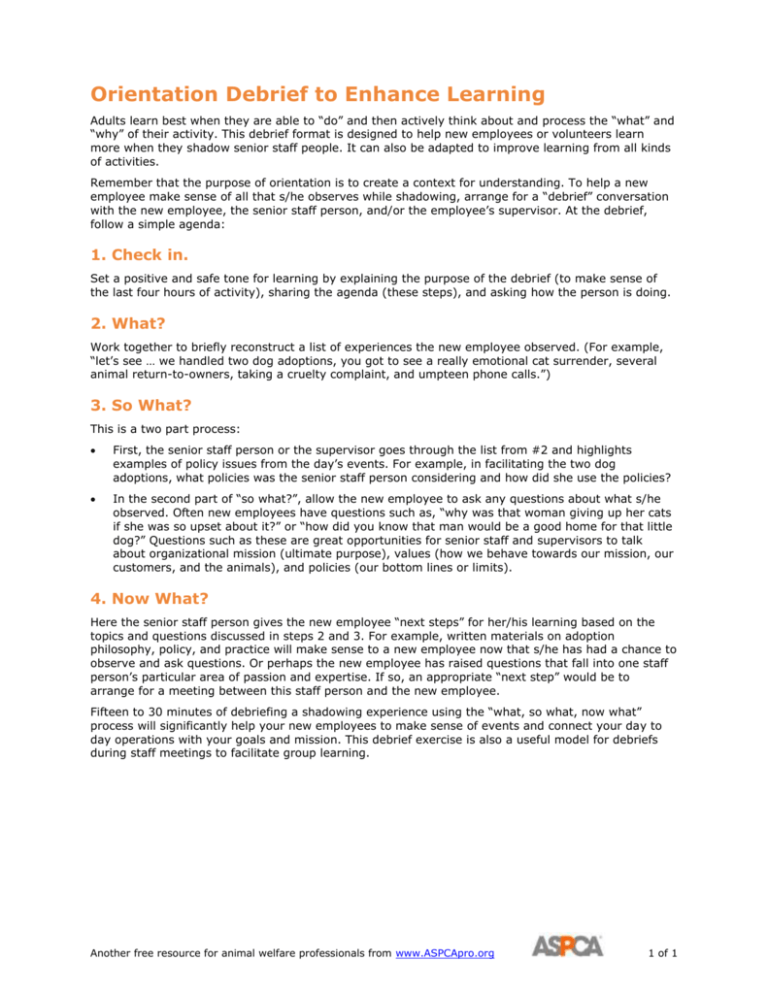
Orientation Debrief to Enhance Learning Adults learn best when they are able to “do” and then actively think about and process the “what” and “why” of their activity. This debrief format is designed to help new employees or volunteers learn more when they shadow senior staff people. It can also be adapted to improve learning from all kinds of activities. Remember that the purpose of orientation is to create a context for understanding. To help a new employee make sense of all that s/he observes while shadowing, arrange for a “debrief” conversation with the new employee, the senior staff person, and/or the employee’s supervisor. At the debrief, follow a simple agenda: 1. Check in. Set a positive and safe tone for learning by explaining the purpose of the debrief (to make sense of the last four hours of activity), sharing the agenda (these steps), and asking how the person is doing. 2. What? Work together to briefly reconstruct a list of experiences the new employee observed. (For example, “let’s see … we handled two dog adoptions, you got to see a really emotional cat surrender, several animal return-to-owners, taking a cruelty complaint, and umpteen phone calls.”) 3. So What? This is a two part process: First, the senior staff person or the supervisor goes through the list from #2 and highlights examples of policy issues from the day’s events. For example, in facilitating the two dog adoptions, what policies was the senior staff person considering and how did she use the policies? In the second part of “so what?”, allow the new employee to ask any questions about what s/he observed. Often new employees have questions such as, “why was that woman giving up her cats if she was so upset about it?” or “how did you know that man would be a good home for that little dog?” Questions such as these are great opportunities for senior staff and supervisors to talk about organizational mission (ultimate purpose), values (how we behave towards our mission, our customers, and the animals), and policies (our bottom lines or limits). 4. Now What? Here the senior staff person gives the new employee “next steps” for her/his learning based on the topics and questions discussed in steps 2 and 3. For example, written materials on adoption philosophy, policy, and practice will make sense to a new employee now that s/he has had a chance to observe and ask questions. Or perhaps the new employee has raised questions that fall into one staff person’s particular area of passion and expertise. If so, an appropriate “next step” would be to arrange for a meeting between this staff person and the new employee. Fifteen to 30 minutes of debriefing a shadowing experience using the “what, so what, now what” process will significantly help your new employees to make sense of events and connect your day to day operations with your goals and mission. This debrief exercise is also a useful model for debriefs during staff meetings to facilitate group learning. Another free resource for animal welfare professionals from www.ASPCApro.org 1 of 1
